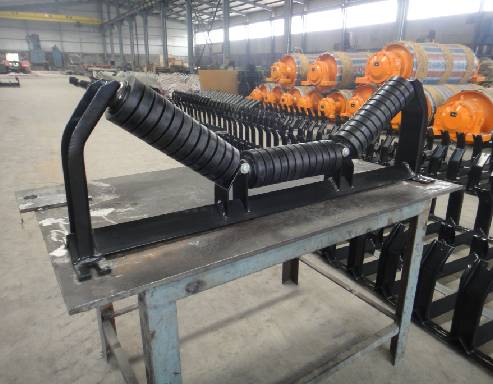 Afrikaans
Afrikaans  Albanian
Albanian  Amharic
Amharic  Arabic
Arabic  Armenian
Armenian  Azerbaijani
Azerbaijani  Basque
Basque  Belarusian
Belarusian  Bengali
Bengali  Bosnian
Bosnian  Bulgarian
Bulgarian  Catalan
Catalan  Cebuano
Cebuano  Corsican
Corsican  Croatian
Croatian  Czech
Czech  Danish
Danish  Dutch
Dutch  English
English  Esperanto
Esperanto  Estonian
Estonian  Finnish
Finnish  French
French  Frisian
Frisian  Galician
Galician  Georgian
Georgian  German
German  Greek
Greek  Gujarati
Gujarati  Haitian Creole
Haitian Creole  hausa
hausa  hawaiian
hawaiian  Hebrew
Hebrew  Hindi
Hindi  Miao
Miao  Hungarian
Hungarian  Icelandic
Icelandic  igbo
igbo  Indonesian
Indonesian  irish
irish  Italian
Italian  Japanese
Japanese  Javanese
Javanese  Kannada
Kannada  kazakh
kazakh  Khmer
Khmer  Rwandese
Rwandese  Korean
Korean  Kurdish
Kurdish  Kyrgyz
Kyrgyz  Lao
Lao  Latin
Latin  Latvian
Latvian  Lithuanian
Lithuanian  Luxembourgish
Luxembourgish  Macedonian
Macedonian  Malgashi
Malgashi  Malay
Malay  Malayalam
Malayalam  Maltese
Maltese  Maori
Maori  Marathi
Marathi  Mongolian
Mongolian  Myanmar
Myanmar  Nepali
Nepali  Norwegian
Norwegian  Norwegian
Norwegian  Occitan
Occitan  Pashto
Pashto  Persian
Persian  Polish
Polish  Portuguese
Portuguese  Punjabi
Punjabi  Romanian
Romanian  Russian
Russian  Samoan
Samoan  Scottish Gaelic
Scottish Gaelic  Serbian
Serbian  Sesotho
Sesotho  Shona
Shona  Sindhi
Sindhi  Sinhala
Sinhala  Slovak
Slovak  Slovenian
Slovenian  Somali
Somali  Spanish
Spanish  Sundanese
Sundanese  Swahili
Swahili  Swedish
Swedish  Tagalog
Tagalog  Tajik
Tajik  Tamil
Tamil  Tatar
Tatar  Telugu
Telugu  Thai
Thai  Turkish
Turkish  Turkmen
Turkmen  Ukrainian
Ukrainian  Urdu
Urdu  Uighur
Uighur  Uzbek
Uzbek  Vietnamese
Vietnamese  Welsh
Welsh  Bantu
Bantu  Yiddish
Yiddish  Yoruba
Yoruba  Zulu
Zulu Optimizing Performance with Roller Idler Solutions for Efficient Conveyor Systems
Understanding Roller Idlers Key Components in Conveyor Systems
In the world of material handling and conveyor systems, roller idlers play a critical role in ensuring the efficient and effective transport of goods across various industries. These components are essential for maintaining the function and longevity of conveyor belts, which are vital in settings such as mining, manufacturing, logistics, and more.
What are Roller Idlers?
Roller idlers are cylindrical components that support and guide the conveyor belt as it moves. Typically made from steel or plastic, these idlers are strategically positioned along the conveyor system to reduce friction, support the weight of the conveyed materials, and maintain belt alignment. The design and functionality of roller idlers are fundamental to the performance of the entire conveyor system.
The Functionality of Roller Idlers
The primary functions of roller idlers can be categorized into three main areas
1. Support Roller idlers provide the necessary support for the conveyor belt. Depending on the load capacity of the system, different sizes and types of idlers are used. By distributing the weight of transported materials evenly across the belt, roller idlers minimize stress and potential wear, thereby extending the lifespan of both the belt and the idlers themselves.
2. Guidance Another critical role of roller idlers is to guide the conveyor belt. Proper alignment is crucial in preventing slippage and misrouting of the belt. Roller idlers facilitate this alignment, ensuring that the belt operates smoothly along its intended path. This guidance is especially important in complex systems with turns and inclines, where the belt is subject to various forces.
3. Friction Reduction Roller idlers are designed to minimize friction between the belt and the idlers. This is particularly advantageous in reducing energy consumption and wear on both the idlers and the belt. By ensuring that the belt rolls smoothly over the idlers, conveyor systems can achieve higher efficiency and lower operational costs.
Types of Roller Idlers
roller idler

Roller idlers come in several varieties, each tailored for specific applications and environments. The most common types include
- Standard Idlers These are the basic idlers used in many applications, suitable for standard load conditions and straightforward conveyor designs.
- Impact Idlers Positioned at loading areas, impact idlers are designed to absorb the shock and impact of materials falling onto the belt, helping protect the conveyor system from damage.
- Training Idlers These idlers are used to assist in keeping the belt centered and aligned. They can be adjustable, allowing for fine-tuning based on the specific characteristics of the conveyor system.
- Return Idlers Found on the underside of the conveyor belt, return idlers support the belt as it returns to the loading point, ensuring consistent movement and reducing wear on the belt.
Maintenance and Longevity
Proper maintenance of roller idlers is essential for ensuring the efficiency and longevity of a conveyor system. Regular inspections should be conducted to check for signs of wear, misalignment, or damage. Lubrication of the bearings within the idlers is also critical, as this reduces friction and prevents overheating, which could lead to failure.
Conclusion
Roller idlers are indispensable components in the operation of conveyor systems. Their ability to support, guide, and reduce friction not only enhances the efficiency of material transport but also plays a significant role in prolonging the life of the entire conveyor system. Understanding the functionality and importance of these components can help industries optimize their operations and maintain productivity. As industries evolve and demand for more efficient systems increases, the role of roller idlers will undoubtedly continue to be pivotal in shaping the future of material handling.
-
Revolutionizing Conveyor Reliability with Advanced Rubber Lagging PulleysNewsJul.22,2025
-
Powering Precision and Durability with Expert Manufacturers of Conveyor ComponentsNewsJul.22,2025
-
Optimizing Conveyor Systems with Advanced Conveyor AccessoriesNewsJul.22,2025
-
Maximize Conveyor Efficiency with Quality Conveyor Idler PulleysNewsJul.22,2025
-
Future-Proof Your Conveyor System with High-Performance Polyurethane RollerNewsJul.22,2025
-
Driving Efficiency Forward with Quality Idlers and RollersNewsJul.22,2025





























